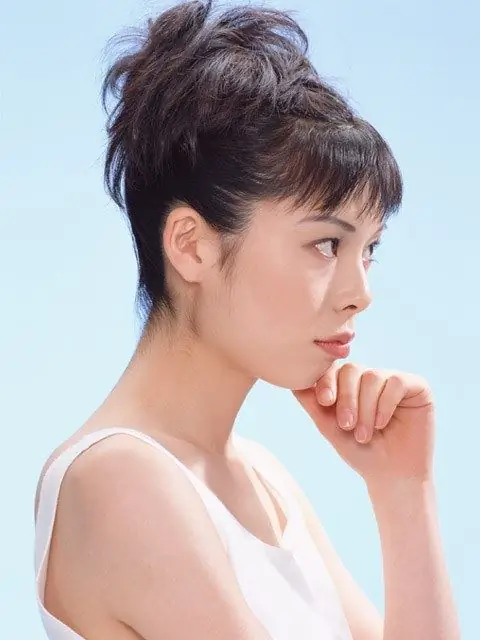To succeed in creating portraits, you need to turn to this genre as often as possible. Drawing from nature is by far the most productive. However, in moments when there is no suitable model, you can sketch the drawing, focusing on the photo.

Instructions
Step 1
Determine how much space the portrait will occupy on the sheet. Calculate the approximate proportional ratio of the face and body and mark their location in the picture with thin strokes.
Step 2
Build a schematic drawing more accurately defining the proportions. The width of the woman's head in the photograph (at forehead level) is equal to her height at the level of the chin. Place checkmarks around this space. Draw two lines for the neck. Its length is equal to half the height of the head, and its width is slightly less.
Step 3
Draw a vertical axis from the chin to the top of the head. Divide it into 4 equal parts with short horizontal segments. On the first segment from below, the lips will be located (the segment touches the upper lip). The model in the photo has the same width of the upper and lower lips. Lift the corner of your lips up slightly.
Step 4
Draw the eyes on the second horizontal axis. Since the woman is photographed in profile, the left eye is almost invisible. The right eye is twice as long as the left, and the distance between them is equal to the length of the right eye.
Step 5
Divide the third part of the face, separated by horizontal lines, in half. At this level are the woman's eyebrows. Their ends extend slightly beyond the boundaries of the eye. Position the inner end of the eyebrow lower than the top to give your face a calm expression. The last horizontal line on top marks the hairline.
Step 6
Draw the woman's hand. To determine the length of the hand from the little finger to the thumb, measure the distance from the chin to the upper eyelid. The dimensions of these parts of the figure are equal. Use light lines to mark the folds on the palm - they can be more clearly indicated with paints.
Step 7
Erase the construction lines and, without pressing the pencil, refine the shape of all parts of the portrait. Try not to redraw the same line many times - during erasing you will damage the top layer of the paper and the color will be uneven.
Step 8
Color the portrait with watercolors or any other material. Determine the amount of light in different parts of the portrait. The photo shows that the light source is on the right. The lightest areas of the face are under the eyes and near the nose, and the highlight is also noticeable on the surface of the nose. Mix on the palette you need a shade. Apply it all over your face. Then gradually darken the less-lit areas.
Step 9
Make the skin at the temples and under the cheekbones a half tone darker. Darken the side of the nose and the notch above the chin. Carefully draw shadows on the eyelids - the expressiveness and character of the whole portrait depends on this. Use the same principle to apply color to the neck and arm. Color your hair last, leaving highlights on the bangs and strands.






